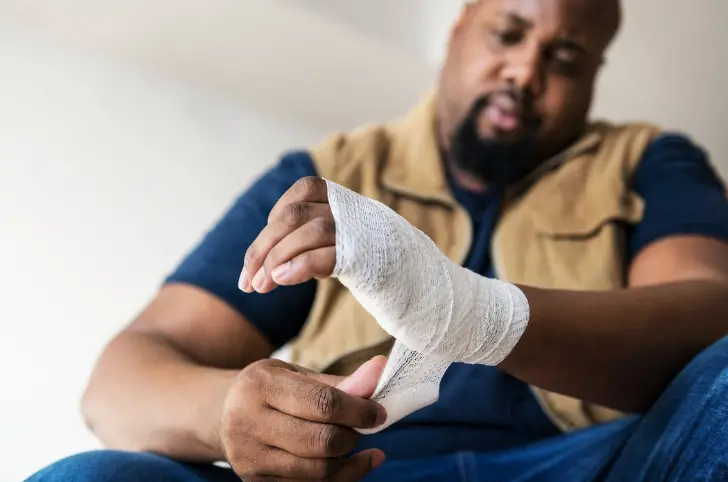What To Know About Injury Recoveries

Injuries, whether from sports, accidents, or everyday activities, are a part of life. However, how you manage and recover from them can significantly impact your overall well-being. Injury recovery is a multi-faceted process that involves physical, emotional, and sometimes even social considerations. Here’s a detailed look at what you should know about injury recoveries, the phases involved, and the best practices for ensuring a smooth healing journey.
Understanding the Recovery Process
Injury recovery varies depending on the type, severity, and location of the injury. The body follows a natural healing process that can be divided into three general phases:
- Phase 1: Inflammation Phase (Day 1-7)
This is the body’s immediate response to injury. Swelling, redness, heat, and pain are common during this phase as the body sends cells to the injury site to clean up damaged tissue. Rest, ice, compression, and elevation (RICE) are often recommended to manage symptoms.
- Phase 2: Proliferation Phase (Day 7-21)
In this phase, the body starts to rebuild and repair damaged tissue. New cells and blood vessels begin to form. Physical therapy and gentle exercises might be introduced to improve circulation and promote tissue regeneration.
- Phase 3: Remodeling Phase (Day 21-2+ years)
This final phase can last months or even years, depending on the injury. Tissues continue to strengthen and return to normal. During this time, physical therapy and rehabilitation exercises are key to regaining full function and preventing re-injury.
Common Types of Injuries and Their Recovery Timeframes
As mentioned, recovery times can vary depending on what injury you’ve experienced. These are some of the most common injuries to give you an idea of how varied it can be:
- Sprains and Strains
These soft tissue injuries are common in ligaments (sprains) and muscles or tendons (strains). Recovery can take anywhere from a few weeks to several months, depending on severity. Mild sprains and strains may heal with rest and rehab, while severe cases may require surgery.
- Fractures (Broken Bones)
Healing times for fractures typically range from 6 to 12 weeks. Immobilization via casts or splints is often required, and physical therapy is usually necessary after the bone heals to restore strength and mobility.
- Tendon Injuries (e.g., Achilles tendon rupture)
Tendon injuries can be particularly tricky because tendons heal slower than muscles or bones. Recovery can range from 6 months to a year, especially if surgery is involved.
- Dislocations
A joint dislocation, such as a shoulder or knee, can take 6 weeks or longer to recover, with physical therapy essential for regaining stability and range of motion.
Getting Support When Needed
Recovering from an injury can be challenging, and depending on the type of injury, you may need additional help. Whether it’s help from family and friends or professional care, having the right support is crucial for a successful recovery. For many people, especially those recovering from major injuries, convalescent care can be an invaluable resource. This specialized form of care is designed to support individuals in the recovery phase after getting an injury, helping them regain strength and independence in a safe and comfortable environment.
You may find that routine tasks like bathing, dressing, and preparing meals can be difficult. Convalescent care staff are trained to assist with these daily activities, ensuring your comfort and well-being while you regain independence. These trained professionals can also adjust your pain medications, provide non-pharmaceutical treatments, and ensure you are as comfortable as possible during your recovery. See more about this type of care here and how it can help you.
The Role of Physical Therapy
Physical therapy is one of the most important aspects of injury recovery. It not only helps to restore function and mobility but also strengthens the injured area to prevent future injuries. A qualified physical therapist will develop a personalized plan that includes exercises to improve strength, flexibility, and coordination and safely transition back to normal activities.
Benefits of Physical Therapy:
- Restores Function: Improves mobility and function after injury.
- Reduces Pain: Techniques like soft tissue mobilization, electrical stimulation, and therapeutic exercises can help reduce pain.
- Prevents Re-injury: Strengthening weakened muscles and improving balance can help prevent future injuries.
Rest vs. Activity: Striking the Right Balance
One of the trickiest aspects of injury recovery is knowing how to balance rest and activity. While rest is crucial in the early stages of healing, prolonged inactivity can lead to stiffness, muscle atrophy, and delayed recovery. Your doctor will guide you through when it’s safe to begin activities, but gradual movement is key to avoiding further injury. If something causes pain beyond mild discomfort, it’s likely a sign you’re overdoing it.
Patience and Persistence
The path to full recovery can be long, and progress may not always be linear. Setbacks are common, but with patience, persistence, and adherence to your rehabilitation plan, you can regain full strength and mobility. Celebrate small victories along the way and remember that rest and recovery are just as important as physical therapy and exercises.
